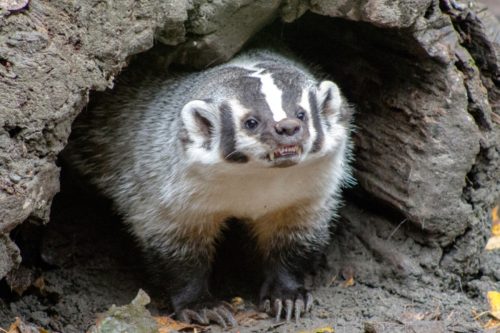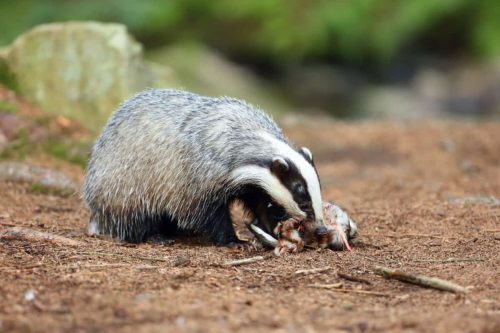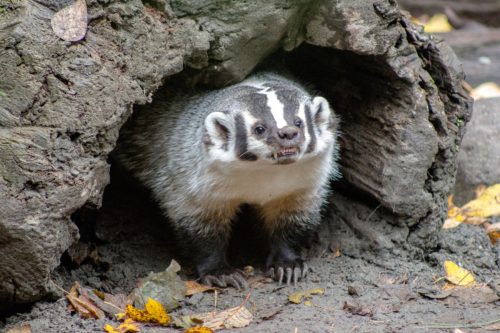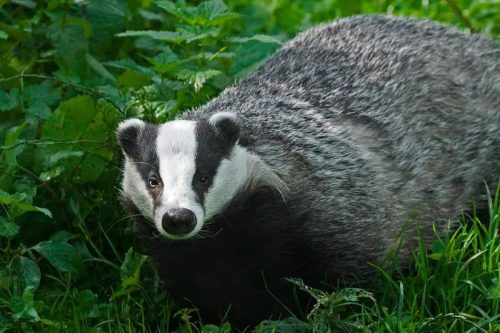Honey Badger Facts – A comprehensive guide to badgers Lifestyle
Honey badger or Ratel is a strong, fierce, and most tenacious mammal in the world which is known for its fearlessness. It belongs to the Mustelidae family under a specie name of Mellivora Capensis. The common name honey is due to its extraordinary fondness for Honey. They love to eat bee larvae in the honey. The compact size mammal is known for its power rather than speed.
Honey badgers have stocky but flexible bodies along with short but strong legs. They have feisty claws on their front feet which are extremely helpful in digging as well as catching prey. They have thick but coarse hair with a gray-white stripe from the top of their heads to the end of their tails. By having thick but loose skin, they could easily extricate themselves from predators. They have small eyes but large skulls along with a strong neck and shoulder.
In this guide, we will let you know all the interesting facts about honey badgers. We will discuss in detail the appearance, hunting plus survival skills, habitat, and many other things about the honey badgers. Stay tuned.
Here we have some fundamental information about Honey Badgers.
| Kingdom | Animalia |
| Class | Mammalia |
| Order | Omnivore |
| Family | Mustelidae |
| Species | Mellivora Capensis |
| Life Span | 7-26 years |
| Weight | 5-16 kg |
| Top speed | 30 KM/H |
Contents
- What Do Honey Badgers Look Like?
- Where do honey badgers live?
- Honey badger’s lifestyle
- Honey Badger Diet
- Are honey badgers immune to snake venom?
- Mating habits of a honey badger
- Honey badger lifespan
- Are honey badgers dangerous?
- Endangerment to Honey Badger
- Universal facts about honey badgers
- Frequently asked questions
- Conclusion
What Do Honey Badgers Look Like?

Due to the close resemblance of honey badgers with the skunk, sometimes people took honey badgers as a skunk and vice versa. Being nocturnal animals, both of them also come out at night. However, there are some differences in their appearances.
For instance, honey badgers have bushy but short tail of just 6 to 12 inches in length but skunk has a long tail. There is also a difference in the color of the skin. Honey badgers with short legs normally stay on the flat land and don’t like to climb but skunks can do.
Both animals leave a special smell while going through any territory. But if honey badgers feel any threat from anything then they could leave stink bombs which are unbearable as compared to the odor of skunk. It might be temporary but leaves a message.
See our article for types of badgers.
Where do honey badgers live?
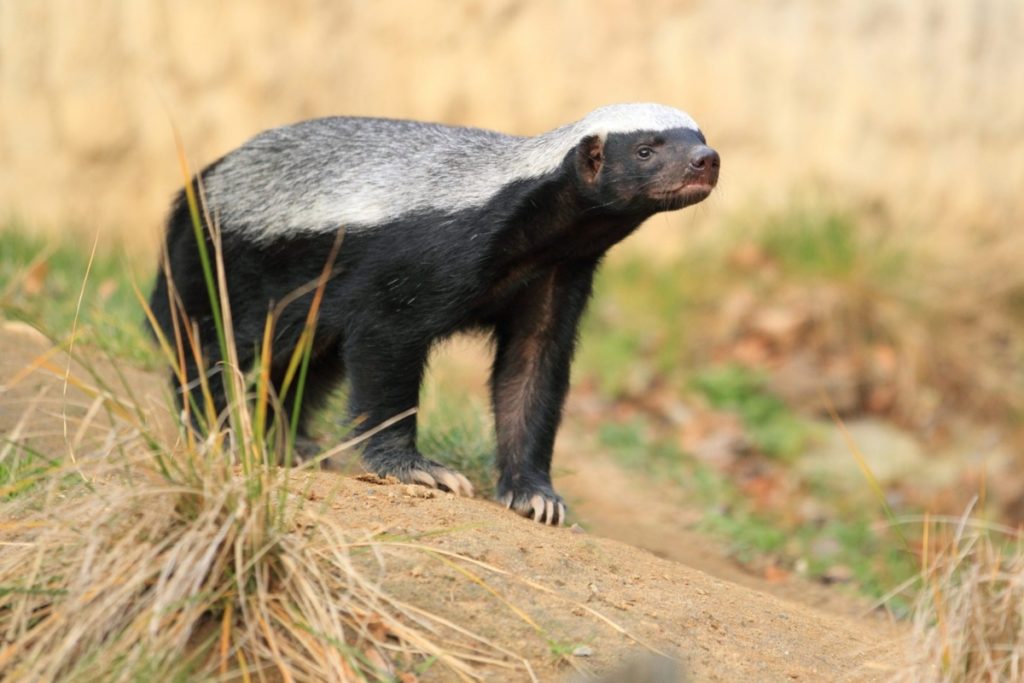
Honey badgers are mostly found in Sub-Saharan Africa, the middle east, and some parts of India. Being incredibly tough creatures, they easily adapt themselves to any kind of habitat. They can easily live in dry areas, grasslands, rainforests, and even in mountainous areas.
As far as the size of their home is concerned, they live in a large home of at least 193 square miles, according to a National Geographic estimate. Male badgers have larger homes than females and sometimes both overlap with each other.
They don’t normally live in one place for a longer period and occasionally change their place of living. It is quite easy for them to change their place of living as they could easily dig in just 10 minutes even on tough grounds.
Honey badger’s lifestyle
Honey badgers have a very unique lifestyle. They like to live in solitary but have a very large home space. It is also common to see them in their mating pairs. They usually meet at special foraging areas where they roll around and sniff each other presence. Moreover, they can also grunt, whine, hiss and growl.
Despite being nocturnal animals, sometimes they also remain active throughout the day. They could make different kinds of settlements in various places. For example, they could easily turn the hollowed trees and rock crevices into their living place. Moreover, they also like to occupy the dens of fellow as well as other animals like mongooses and porcupines.
They are also nomadic animals and make very long foraging trips. For instance, male badgers travel up to 27 km daily, but females make very short trips and only travel just up to 10 km. Sometimes they socialize with other fellows but most of the time it ends up in a confrontation with each other.
As you know, honey badgers have very long, powerful, and sharp claws which are highly helpful for digging purposes. By using these exceptional digging skills, they could easily make dens for themselves as well as for others. Digging skill has also been very helpful in hunting small animals living underground.
Honey Badger Diet
Honey badgers are omnivores animals and have a very wide range of diet. With a keen sense of sniffing, they could easily find their food hidden underground. They could eat small as well as big animals. They are a vicious hunter and could also take on more powerful and large animals. In South Africa, they have been seen hunting down Oryx which is ten times large than the size of a honey badger.
They love to eat small animals like insects, larvae, lizards, beetles, scorpions, birds, foxes, eggs, rodents, etc. They could also attack and eat big animals like snakes, reptiles, crocodiles, pythons, cobras, black mambas, jackals, wild cats, etc. They might have a lower weight if they are not taking a sufficient diet. But it rarely happens because they can eat a variety of foods and easily adapt themselves to every kind of environment.
Other than animals, they also have a very strong fondness for honey. They are actually more interested in the bee larvae than the sugary syrup. They could easily bear a large number of stings from bees while reaching their claws to the sweet stuff. According to National Geographic, they could also sting to death while raiding large beehives.
See our complete guide about What Do Badgers Eat?
Are honey badgers immune to snake venom?
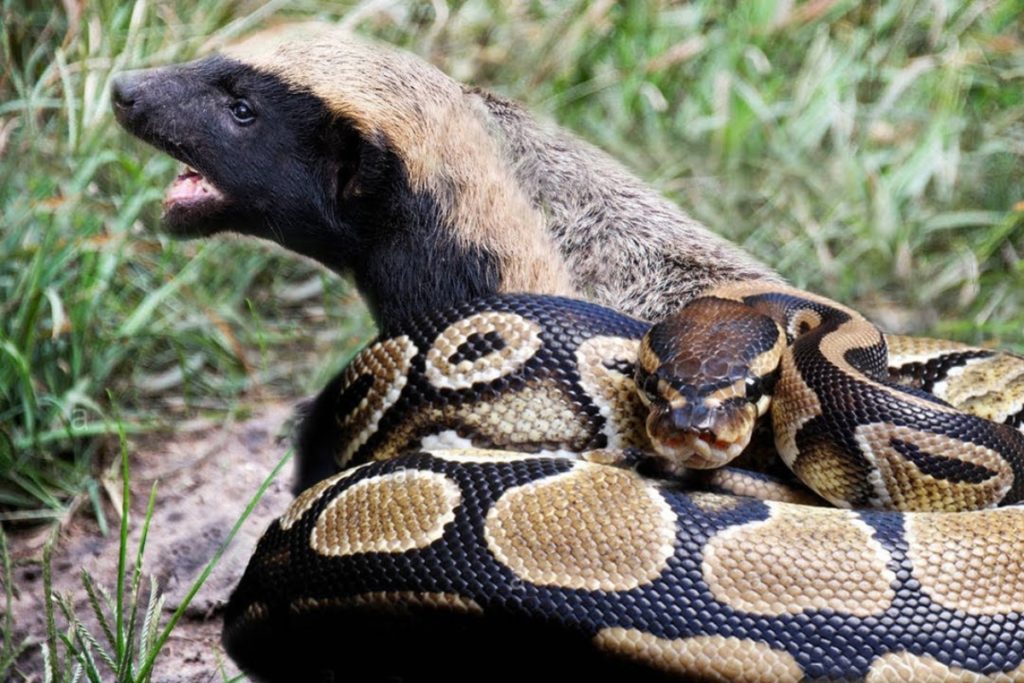
Honey badgers have a very thick double coat skin which plays a great role in their survival. The skin is not only tough but also loose enough that they can easily rotate in it. You can realize the toughness of their skin by the fact that they could easily survive the bite of very dangerous creatures like scorpions and snakes. They exhibit very strong immunity against snake venom and could easily attack back and eat them.
When they are attacked in the face by the highly toxic snake. They show great signs of severe pain but recovered within five hours. This kind of immunity develops with the passage of time through regularly contacting with a small quantity of venom. Small cubs are normally not immune enough that they need the protection of their mother against dangerous creatures.
Snakes are actually considered the perfect source of meat for the honey badger. It is almost 25% of the part of its diet, according to the slate magazine. Venomous snakes are considered a very deadly meal for most carnivores, but honey badger has a special kind of immunity against this toxic venom.
There is actually a venom defense mechanism system in the honey badgers which activates whenever there are chances of some deadly material in the snake.
Mating habits of a honey badger
Honey badgers like to practice polygynous mating culture. There is a lot of competition find among the badger males for mating rights. According to a recent study, these animals mate throughout the whole year but the peak period is between September and December.
The baby badger is born in the burrow and stays there for at least 3 months. Usually, a female gives birth to one cub at a time. The baby badger remains with the mother for at least 1 year. They normally stay with their mother for two years according to the San Diego zoo. During this time, the cub learns various skills like hunting, climbing, and most importantly digging.
Male badger reaches the age of maturity after the age of 2 to 3 years but female badger reaches the age of maturity after 12 to 16 months.
Honey badger lifespan
Honey badger lifespan varies from one environment to another. They have a much longer lifespan in captivity than in the wilderness.
How long do honey badgers live in captivity?
In captivity, honey badgers are given very great care. They live much longer in captivity. According to the San Diego zoo, they could easily live up to 26 years in captivity. Some honey badgers have also lived up to 30 years. In captivity, they dig and collect their food most of the time. The immunity of honey badgers gradually decreases when they become old. In old age, they could die from injuries, disease, or under natural circumstances.
How long do honey badgers live in the wild?
Honey badgers don’t enjoy very long ages in the wilderness. They live up to a maximum of 10 years and mostly 7 years. In the wild, they have to deal with different kinds of threats from predators, the environment, and food insecurity. They also have to face a lot of injuries in the wild.
Are honey badgers dangerous?

Honey badgers are known as fearless animals. Despite having a very small size, they could compete with big and dangerous animals like snakes, lions, skunks, etc. They are also dangerous due to their extraordinary muscularity, the toughness of the body structure, and strong as well as sharp claws. They tear apart many small animals that they hunt for food. They are highly furious against animals who attacked their territory.
Honey badgers show great aggressiveness if they feel threatened by animals or human beings. you could also analyze this aggressiveness by visiting any nearby wildlife center. Observe them from a distance because they are very dangerous. They might not kill you but could be harmful for you.
Due to their vicious nature, you could not domesticate or keep them as pet animals. Sometimes when you tamed them as an exotic wild animals in the wildlife center, they could act aggressively whenever their wild instincts kick in. You should also keep your domestic pets away from this animal as honey badgers could consider them as a territorial threat or prey.
Endangerment to Honey Badger
According to IUCN (International Union for Conservation of Nature), honey badgers could not be enlisted in the red list. Although in some areas the population of the Honey badger is decreasing but in the majority of areas it has been stable. In countries like Morocco, Kazakhstan, and Israel, honey badgers are being protected at the official level to stop the declining trend of their population.
In some countries like Zambia and Guinea, honey badgers are hunted for the sake of bush meat which is latterly used in traditional medicines. It is practiced to transfer the toughness and fearlessness of honey badgers to human beings. As you all know the honey badger can kill venomous snakes and could easily confront lions.
As human beings are hurriedly clearing lands for sake of farming and industrialization, they are intruding on the territories of the honey badgers. Honey badgers have also been involved in killing livestock and destructing beehives. Owing to these things, honey badgers come in direct conflict with human beings. In some areas, they are intentionally poisoned to save other creatures. These things are also causing the extinction of honey badgers in some areas.
In this regard, the endangered wildlife trust has recommended some things to do for saving the population of the honey badger. They want beekeepers to place the beehives at least 3 feet above the ground as honey badgers could not climb easily. Human beings must also stop intruding into the territories of the honey badgers and stay their lands intact if they really want to save their livestock.
Universal facts about honey badgers
Frequently asked questions
Conclusion
Honey badgers are unique animals of small size but capable of doing very hard and big things as we have discussed in this article in a very comprehensive manner. We have started from their early life to dietary habits, appearance, habitat, aggressive nature, and overall lifespan of a honey badger. The article will clear all your confusion about honey badgers.

Izzy is an experienced ranch worker who has a passion for exploring nature and getting up close to wildlife. With her connections to various animal organizations, Izzy is well-versed in animal care and rehabilitation.



